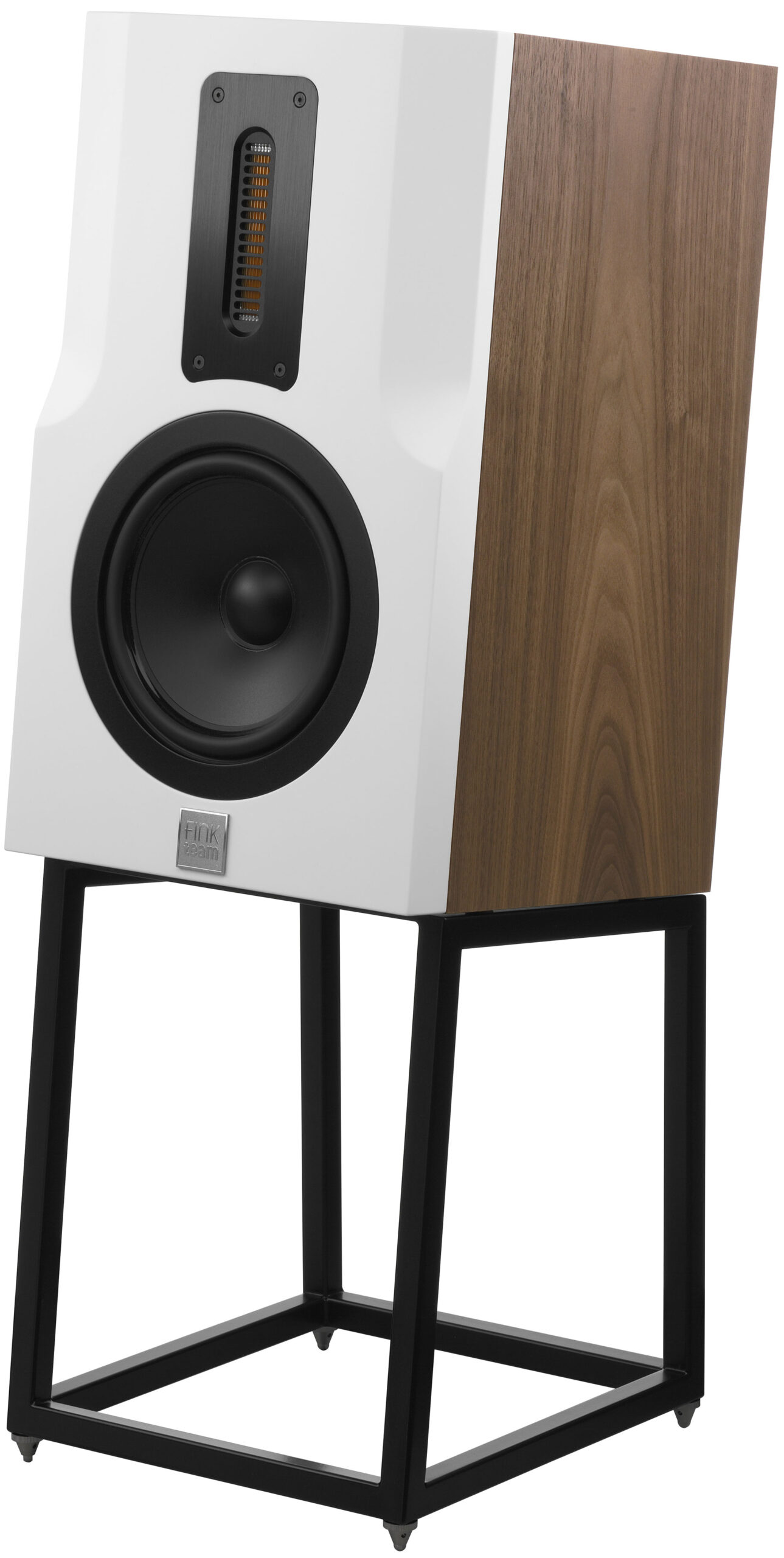FinkTeam KIM
Ah yes, I remember it well. February 2018 found me in Bristol, England at its eponymous HiFi Show. The show, a warhorse of sorts, has been in existence for decades, and I daresay it will persevere for yet a few more. It was there, in the pub (bar for the Yanks) I met Karl-Heinz Fink, the vaunted speaker designer, for the first time. He was just coming off a load of speaker designs for other companies and people and shared with me that it was time he strike out on his own with his creative designs.
Fink’s fascination with the TV series Star Trek led to him naming his first commercially available speaker the Borg and its follow-up the KIM. A beast of a speaker, the Borg may indeed resemble a coffin, but it is full of life and in no way shy about grabbing one’s attention. However, today is all about its smaller sibling, the KIM.
Those of you following my reviews and posts online know that I maintain a certain predilection for stand-mount speakers, which the KIMs are. While not to everyone’s taste, there’s something to be said for a speaker designer who goes to great lengths to design his stand-mount speakers with integral stands. Sleek in their physical design and sloped upwards, the speakers-plus-stands eschew the conventional geometry for a more asymmetric design. As such the speaker stands need not be towering and separate adjustments of the front and rear feet/spikes can assist in their final physical placement. The gentle upward slope can also play a part concerning time alignment.
I must say that with the stands fully integrated and the sizeable rear port, unboxing the speakers was a breeze. Transporting them from room to room to match with several systems was a delightful surprise. Not sure what to expect, I was contemplating calling on someone for help. To be fair the speakers were strapped to a rather sizeable pallet.
For those of us on this side of the pond, each speaker with its stand is roughly 33.6” high, 11.8” wide,12.2” deep and weighs 55.3 lbs. The big takeaway here is that, given the KIMs’ size and weight, their construction is formidable. As mentioned earlier, the speakers are supplied with adjustable spikes and/or hardwood-friendly rounded feet. The speaker terminals allow for single-wiring only, but with that said, they are indeed 5-way, so a host of termination options apply.
Not many stand-mount speakers allow the user hands-on fine-tuning of the speaker system, and with the KIMs there are options to adjust for low noise and low-frequency reflex. If that were not enough there is a three-position high-frequency level adjustment, which can be tailored to one’s respective room dimensions/characteristics and gear/system choices.
Something I found interesting is the inclusion of a damping adjustment, again using a three-position switch, which, depending upon the damping factor of one’s system amplification, could indeed make a difference.
At this juncture, I want to make abundantly clear that all this fine-tuning is in the ears of the beholder. It is not just about what makes sense scientifically and/or arithmetically, but what can be heard. While everyone’s mileage will vary, it is uncommon that a speaker designer allows for such end-listener customization, so full marks to Karl-Heinz Fink.
Having apprised Karl-Heinz of the speakers’ arrival I was asked if I listened to digital audio and made use of Roon. When I responded in the affirmative, I was made aware that there are compatible DSP filters (delay-compensation) designed by FinkTeam that are works-in-progress. These filters compensate for group delay of the passive crossover in the upper midrange and, according to my research, the excess group delay can affect both the auditory image and spatial impression of sound as it is heard. A second set of filters compensates for overall group delay, which for Roon can drastically reduce delay to single rather than double digits in terms of milliseconds.
Note, the use of these filters is optional. I decided that since they were on offer I was going to listen to the speakers with and without them, if for nothing else a heightened sense of curiosity. It would be a crime not to. In my experimentation, I could hear the differences and the effects, but that does not mean they are suitable for everyone. In this new digital audio age, it makes sense for designers and manufacturers to extend themselves and make the most of what’s out there. If any of you are fortunate to acquire a pair for purchase or even a test drive, do avail yourself of the opportunity to experiment with these filters.
- (Page 1 of 2)
- Next page →





